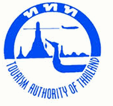Laos is a Southeast Asian country traversed by the Mekong River and known for its mountainous terrain, French colonial architecture, hill tribe settlements and Buddhist monasteries. Vientiane, the laid-back capital, is the site of That Luang, a reliquary reportedly housing the Buddha’s breastbone, plus the Patuxai war memorial and Talat Sao (Morning Market), a shopping complex jammed with food, clothes and craft stalls.
Lao People’s Democratic Republic (Lao PDR)
Population: 6.77 million (2013 est.), world bank
Capital City: Vientiane
Government Socialist republic
Currency: Lao Kip (LAK)
Nationality: Lao
Religions: Buddhism
Languages: Lao (official), French, English, and various ethnic languages
Location: Southeastern Asia, northeast of Thailand, west of Vietnam
Map references: Southeast Asia
Area: 91,428 Square Miles
236,800 Square Kilometers
Electricity 220V, 50Hz (American and/or European plug)
Country code: +856
Time Zone: GMT +7hours
Business hours: Government offices are open from 08:30am-12:00pm, 01:00pm-04:00pm on Monday through Friday. Banks open from 08:30am-03:30pm on Monday-Friday, shops around 09:00am-06:00pm (holiday depends on each shop).
-Telephone and Internet access
– Internet access is available in many hotels, guesthouses, and restaurants in big cities. Although internet cafes are often available in provincial capitals (except in rural areas)
– Phone: You can also purchase a local pre-paid SIM card for your mobile phone.
Credit Card: Visa is the most commonly accepted. Master Card and American Express are accepted in the big hotels, restaurants and souvenir shops in the large cities (such as Vientiane, Luang Prabang, Savannakhet and Champasack)
Emergency Services:
Tourist Police dial 192
Police dial 191
Ambulance and Rescue dial 195
Fire dial 190
Electricity dial 199
International Clinic of Mahosot Hospital +856-21-214022
Destination
Vientiane- Laos’ laid-back capital, mixes French colonial architecture with Buddhist temples such as the golden, 16th-century Pha That Luang, a national symbol. Along broad boulevards and tree-lined streets are notable shrines including Wat Si Saket, which features thousands of Buddha images, and Wat Si Muang, built on a Hindu shrine. Many bakeries, cafes and villas seem straight out of 19th-century Paris.
Luang Prabang – the capital of Luang Prabang Province in northern Laos, lies in a valley at the confluence of the Mekong and Nam Khan rivers. It’s known for its many Buddhist temples, including the gilded Wat Xieng Thong, dating to the 16th century, and Wat Mai, once the residence of the head of Laotian Buddhism
Vang Vieng- is a tourist-oriented town in Laos in Vientiane Province about four hours bus ride north of the capital. The town lies on the Nam Song River. The most notable feature of the area is the karst hill landscape surrounding the town
Pakse or Pakxe- is the capital and most populous city in the southern province of Champasak, making it the second most populous city in Laos. Located at the confluence of the Xe Don and Mekong Rivers.
Savannakhet or Kaysone Phomvihane- is a city in western Laos and the capital of the Savannakhet Province, previously known as Khanthabouli. This is the second-largest city in Laos, after Vientiane
Phonsavan – is the capital of Xiangkhoang Province. The name stands for “hills of paradise”. Phonsavan is the provincial capital of Xiangkhouang Province. The countryside is dominated by green hills and pine forests
Louang Namtha, M. Nalae, or M. Na Lae, Luang Nam Tha – is the capital of Luang Namtha Province in northern Laos. The city lies on the Tha River. Luang Namtha is the largest settlement in northwest Laos, north of Luang Prabang
(Credit information from Wikipedia)
Climate:
Laos has climate with two distinct monsoon seasons.
-The wet southwest monsoon season runs from May to October
-The northeast monsoon in the months of November to April brings drier weather. Though most of the country has warm temperatures year-round.
-The end of January to May the temperatures rise and it can get very sticky when the rains arrive in May. Daytime temperatures over 35°C are not unusual during these months.
– June to October expect a fair bit of rain, even flooding in the Mekong River area. —- The best time to visit Laos is from November to February with the coolest, driest days as well as some of the country’s most colourful festivals to enjoy.
– Tipping guideline
Tipping is not customary in Laos. However, small gratuities may be given in appreciation for efficient, friendly service.
Visa
Visa require, needed passport and two, two-inch photos, valid for one month, costing for visa stamp fee start from US$30 can get on arrival with arrival available at Friendship Bridge, Vientiane and Luang Prabang airports as well as Chong Mek.
More information about Lao Visa
Useful Link: Lao Embassy in Foreign countries
Entry Points (credit from http://www.tourismlaos.org)
Air
There are four international airports in Laos where you can get visa on arrival such as: Wattay International Airport in Vientiane, Pakse International Airport in in Champasack Province, Luang Prabang International Airport and Savannakhet. Wattay in Vientiane has regular service from Bangkok, Chiang Mai, Hanoi, Ho Chi Minh City, Siem Reap and etc.
Boat
If you enter Laos from Thailand at Houai Xay (Bokeo), it is necessary to take a short ferry ride across the Mekong River. After crossing from Chiang Khong in northern Thailand to Houai Xay, many people proceed directly to Luang Prabang via the Mekong.
If you are heading north to Luang Namtha, a two-day journey on the Namtha River is a memorable adventure. The boat takes you through beautiful forest. You need an overnight stay in boatman’s home. There is also a regular boat service on the Mekong from Pakse to the UNESCO World Heritage Site at Wat Phou, and through the Four Thousand Islands in the far south.
Land
You can access Laos by road from Thailand, Vietnam, Cambodia and Yunnan Province in China. There are presently 24 international border crossings where 15-day visa on arrival can be obtained. The most popular entry point is Vientiane’s Friendship Bridge that crosses the Mekong and connects Laos to Thailand…..
Train
A train operates daily between the Lao-Thai Friendship Bridge (Vientiane Capital) and Nong Khai (Thailand) connecting Laos to Thailand.
Prohibited goods
Before importing goods into Laos you should ensure that they do not fall into the category of prohibited goods. Prohibited goods cannot be imported, exported, transited, sold or circulated in Laos. Among prohibited goods are weapons, narcotics, psychotropic substances and hazardous chemical substances. You should refer to the specific laws and regulations that cover these prohibitions.
Tips & Good to Know
– In Laos shopping: if there’s no barcode or set price, get haggling, you could probably bargain 35% off, as a rough guess
– Tourist locations are considered safe. Observe all normal precautions. Assistance should be obtained through your hotel.
– No vaccinations mandatory however, if travelling to remote or border areas, vaccination against typhoid, hepatitis, tetanus and Japanese encephalitis desirable. Outside of Vientiane, there is malaria risk. Adequate supplies of any prescription drugs should be carried as they may not be available locally. Comprehensive medical insurance recommended, including evacuation by air in case of emergency. Hospitals, particularly up-country, do not meet western standards.
– About Drink Water!!! Purified, bottled water is available everywhere. Always make sure bottled water is sealed.
– Carrying ID is a must in Laos. Instead of dragging your passport around with you, and with it the constant fear of losing it, take a photocopy.





